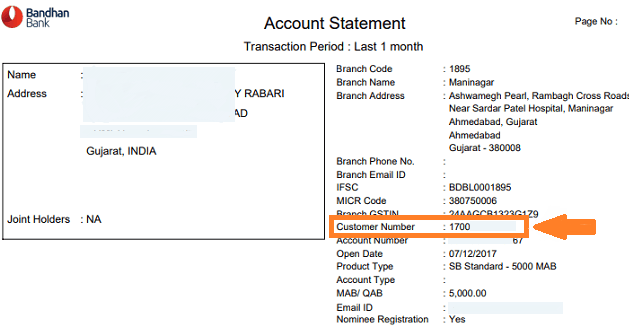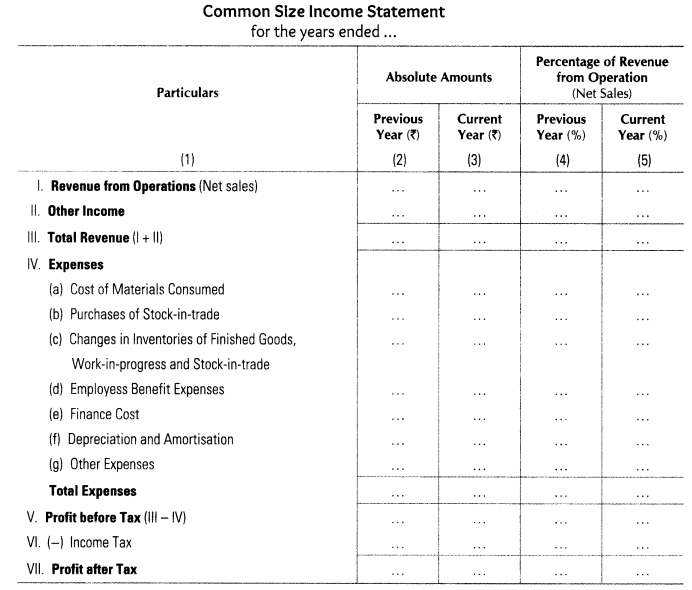

It is issued at a discount, usually in denominations of at least $100,000. Every part is explained beautifully can you add some calculating examples along with content it will help to understand the business in the real world. As per the Uniform Commercial Code, there are four major types of Commercial Papers. Not a viable tool for long-term obligations as there are better tools available for that purpose.
In 1980s many other countries launched commercial paper market, notably Sweden , Spain , Hong Kong , Singapore , Norway . The liquidity crisis that ensued exposed the vulnerabilities in the U.S. money market system, resulting in more strict regulations to be placed and less capital allocated to the ABCP sector. The primary downside to commercial paper is that companies are restricted to using the proceeds on current assets, namely inventory and accounts payable (A/P). CP should not be issued if the credit rating is no longer valid. A minimum of P2/A2 rating should be maintained by the firm from CARE/ICRA/CRISIL or any approved credit rating agencies. The firm issuing the commercial paper must have a total worth of at least Rs.4 crore with respect to their recent balance sheet.

Have a look at these pointers to understand when it is beneficial to avail this paper. Subsequently, the Uniform Commercial Code has divided the commercial paper in India into four categories, as mentioned below. A negotiable certificate of deposit is a CD with a minimum face value of $100,000. Commercial paper is also easier to deal with compared to the effort, time, and money involved in getting a business loan. Commercial Real Estate vs Residential Real Estate Investors often face the difficult decision of choosing between investing in commercial real estate vs residential real estate. Each of these investments has its own benefits and drawbacks.
At the end of the maturity period, the commercial paper is technically due, and the issuer is now liable to return investor capital (though they may choose to simply re-issue more commercial paper). Commercial paper is an unsecured, short-term debt instrument issued by corporations. It’s typically used to finance short-term liabilities such as payroll, accounts payable, and inventories. Commercial paper is usually issued at a discount from face value. Most of the commercial paper market in Europe is modeled on the lines of the US market.
On the other hand, a typical investor can also invest in the instrument via mutual funds, exchange-traded funds , etc. It is important to note that due to the promissory nature of the commercial paper, only large corporations with high credit ratings will be able to sell the instrument at a reasonable rate. Such corporations are what is colloquially defined as “blue-chip companies” and are the only ones that enjoy the option of issuing such debt instruments without collateral backing.
Issuer
On approval of the listing application by the concerned stock exchange, the disclosures so provided along with the application for listing, shall be made available on the website of the concerned stock exchange. C) The buyback offer may not be made before 30 days from the date of issue. The amounts sought to be raised under the CP should be within the limits approved by Board of directors of the issuer or within the ceiling stipulated by Credit Rating Agency whichever is lower. A Commercial Paper can be issued on different dates in parts provided that in such case each CP shall have the same maturity date. Every issue of CP, including renewal, shall be treated as a fresh issue. Commercial Paper shall be issued at a discount to face value.
So, the ABC Company pays an interest amount of $0.1 Million for the deal. Eurocommercial paper are short-term commercial loans issued in the international money market. Due to the large minimum denominations (usually $100,000 or more), large institutions comprise the main buyers of commercial paper. According to the SEC, these include “investment companies, retirement accounts, state and local governments, financial and non-financial firms.”
Eventually, the entire financial institutions and primary dealers were permitted to issue commercial paper so that they can meet their funding needs to run the operations of the firms. Commercial papers are usually issued for maturities that are between 7days minimum and one-year maximum from the issue date. However, investors need to be aware that these notes are not FDIC-insured. They are backed solely by the financial strength of the issuer in the same manner as any other type of corporate bond or debenture.
According to the RBI monetary policy for the second half of 1994 — 95, the standby facility by banks for CP has been abolished. When CPs are issued, banks will have to effect a pro-rata reduction in the cash credit limit and it will be no longer necessary for banks to restore the cash credit limit to meet the liability on maturity of CPs. This will import a measure of independence to CP as a money market instrument. On the recommendations of the Vaghul Working Group, the RBI announced on 27th March, 1989 that commercial paper will be introduced soon in Indian money market.
From equities, fixed income to derivatives, the CMSA certification bridges the gap from where you are now to where you want to be — a world-class capital markets analyst. A backup line of credit is used by a bank to cover any issue of commercial paper for which financing from new paper may not be available. Bonds pay interest at regular intervals over the life of the loan. Though both instruments result in a return of capital at the maturity date of the instrument, bonds also make payments along the way. This makes it a cost-effective and a simple means of financing.

In case of manual payment, payment challan copy can be submitted to IPA. Call option and/or put option is not permitted on CP; It is held in dematerialized form. – Like drafts, these are written in paper forms where the drawee is a bank. The offers that appear in this table are from partnerships from which Investopedia receives compensation. Investopedia does not include all offers available in the marketplace.
Certificate of Deposit
In the UK the Sterling Commercial Paper Market was launched in May 1986. In the UK, the borrower must be listed in the stock exchange and he must met assets of least $50 million. The maturities of commercial paper must be between 7 and 364 days. Today, the US commercial paper market is the largest in the worlds. The outstanding amount at the end of 1990 in the US commercial paper market stood at $557.8 billion.
Commercial paper is just like bonds, though each instrument has its own unique characteristics. Adam Hayes, Ph.D., CFA, is a financial writer with 15+ years Wall Street experience as a derivatives trader. Besides his extensive derivative trading expertise, Adam is an expert in economics and behavioral finance. Adam received his master’s in economics from The New School for Social Research and his Ph.D. from the University of Wisconsin-Madison in sociology. He is a CFA charterholder as well as holding FINRA Series 7, 55 & 63 licenses. He currently researches and teaches economic sociology and the social studies of finance at the Hebrew University in Jerusalem.
A bank or a financial institution issues a Certificate of Deposit. It is a more convenient and inexpensive financing option than applying for a business loan. SEC does not make it mandatory to register the money market instruments. CPs are money market instruments and not securities, accordingly the provisions related to private placement of securities shall not apply to issuance of CPs and hence company need not file PAS-3 with the Registrar. The requirements of the provisions under Section 179 or Section 180, as the case may be, pertaining to borrowings shall be applicable.
With the introduction of liberalisation in the global market during the year 1985 to 1990, the Indian government introduced several short term debt instruments. One such debt tool is the commercial paper that came into the Indian money market in 1990 and initiated financial reform in India. Wealthy individual investors have also historically been able to access commercial paper offerings through a private placement.
- After the end of the Civil War, Goldman Sachs was the biggest dealer in this financial instrument.
- It is also becoming increasingly available to retail investors from many outlets.
- Besides his extensive derivative trading expertise, Adam is an expert in economics and behavioral finance.
- Others can access commercial paper by investing in funds that hold it.
- The primary downside to commercial paper is that companies are restricted to using the proceeds on current assets, namely inventory and accounts payable (A/P).
- Commercial paper is usually sold at a discount to its face value and is a cheaper alternative to other forms of borrowing.
The world of fixed-income securities can be divided into two main categories. Capital markets consist of securities with maturities of more than 270 days, while the money market comprises all fixed-income instruments that mature in 270 days or fewer. The commercial paper falls into the latter category and is a common fixture in many money market mutual funds. This short-term instrument can be a viable alternative for retail fixed-income investors who are looking for a better rate of return on their money. Commercial Paper is a short term debt instrument issued by Companies to raise funds for a time period of not more than one year.
Understanding Commercial Paper
The outstanding amount at the end of 1990 in the commercial market was $26.8 billions. Certificate of Deposit or CD is a crucial document primarily issued by the eminent banks to a veteran investor who selects to deposit his amounts or funds in the bank for a definite amount of time. Moreover, a CD is also regarded as a promissory note issued by a bank. It is an unsecured money market instrument in the form of a promissory note. The Credit Rating agencies must comply with SEBI guidelines for using ratings for money market instruments.
Commercial paper is a common form of unsecured, short-term debt issued by a corporation. Investors in commercial paper are usually institutions rather than individuals, due to the large minimum denominations involved. Commercial paper shall be issued in multiples of Rs. 25 lakhs but the minimum amount to be invested by a single investor shall be Rs. 1 crore. Commercial paper should not be subject to stamp duty at the time of issue as well as at the time transfer by endorsement and delivery. One variation of commercial paper is asset backed commercial paper , which is also a short-term issuance but is backed by collateral.
Commercial Paper: Definition and Market
Commercial Paper is a potent tool for corporates to raise funds easily, quickly and at a lower cost. It is a safe and credible debt instrument for issuers and you, the investor. Issuers can sell securities to investors directly, or to a dealer. The main types of commercial paper are notes, drafts, checks, and certificates of deposit. Typically, commercial paper is issued at a discount in denominations of at least $100,000.
Advantages
A total of 112 issues were done in April 2019, and out of those, 47 issues were related to the 1-4 days bracket. Hence it is not a source of funds which is available to all. For investors, returns are higher as compared to bank deposits. On furnishing ISIN and other required documents as mentioned above, IPA will issue certificate and will make available the same in electronic form and on website of depositories for the CPs. In general, they are used to settle the debts that are short-term and also which are unsecured. If you don’t know it has been introduced to India only by 1990.

